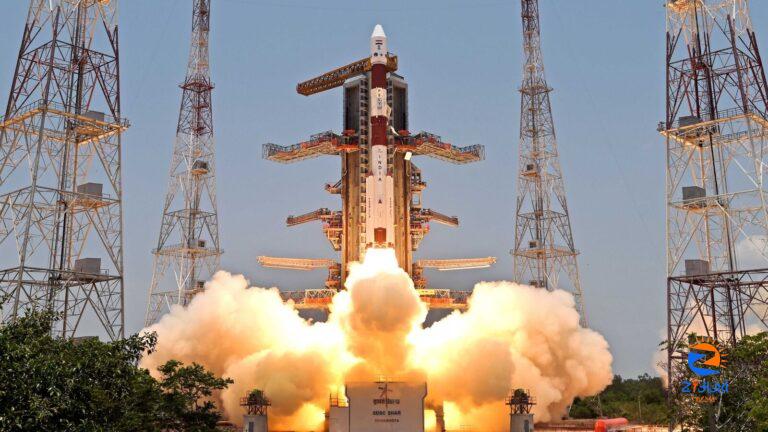
[ad_1]
But what will happen when Aditya L1 will reach the Lagrange Point 1?
Somanath said when the Aditya-L1 spacecraft reaches the L1 point, “we have to fire the engine once again so that it does not go further.”
“It will go to that (L1 between Sun and Earth) point, and once it reaches that point, it will rotate around it and will be trapped at L1,” the ISRO chief was quoted by news agency PTI as saying.
Even the ISRO mentions on its website that upon arrival at the L1 point, a manoeuvre wound binds Aditya-L1 to an orbit around L1 — a balanced gravitational location between the Earth and the Sun.
“The spacecraft is planned to be placed in a halo orbit around the Lagrangian point 1 (L1) of the Sun-Earth system, which is about 1.5 million km from the Earth,” the ISRO said.
According to the ISRO, Aditya-L1 will stay approximately 1.5 million km away from the Earth, directed towards the Sun, which is about 1 per cent of the Earth-Sun distance.

View Full Image
ALSO READ: Aditya-L1’s SUIT takes first-ever full-disk representations of Sun | See pics
“The strategic placement at the L1 Lagrange point ensures that Aditya-L1 can maintain a constant, uninterrupted view of the Sun,” the ISRO said.
Aditya-L1 has already performed a “Trans-Lagrangian1 insertion manoeuvre”, which marked the beginning of its 110-day trajectory to the destination around the L1 Lagrange point.
What follows next?
“Once it is successfully placed on L1 point, it will be there for the next five years, gathering all the data which are very important not for India alone but for the entire world,” Somanath said.
The Sun is a giant sphere of gas and Aditya-L1 would study the outer atmosphere of the Sun. “Aditya-L1 will neither land on the Sun nor approach the Sun any closer,” the Indian space agency added.
The ISRO chief said that the data will be very useful to understand the dynamics of the Sun and how it affects our lives.
“The satellite (Aditya L1) (will) spend its whole mission life orbiting around L1 in an irregularly shaped orbit in a plane roughly perpendicular to the line joining the Earth and the Sun,” the ISRO said.
About Aditya-L1 and its mission goals
Aditya-L1 is a “satellite dedicated to the comprehensive study of the Sun”. The Polar Satellite Launch Vehicle (PSLV-C57) successfully launched the Aditya-L1 spacecraft on September 2, 2023. It is the first space-based observatory class Indian solar mission to study the Sun.
The spacecraft carries seven payloads to observe the photosphere, chromosphere, and the outermost layers of the Sun (the corona) using electromagnetic and particle detectors.
“Using the special vantage point of L1, four payloads would directly view the Sun and the remaining three payloads would carry out in-situ studies of particles and fields at the Lagrange point L1,” the ISRO said.
The Aditya L1 payloads are expected to provide the “most crucial information” to understand the problems of coronal heating, Coronal Mass Ejection, pre-flare and flare activities, and their characteristics, dynamics of space weather, the study of the propagation of particles, and fields in the interplanetary medium.
The role of seven payloads
1. Visible Emission Line Coronagraph (VELC): It is the prime payload designed as a reflective coronagraph with a multi-slit spectrograph,
2. Solar Low Energy X-ray Spectrometer (SoLEXS): It is designed to measure the solar soft X-ray flux to study solar flares.
3. Plasma Analyser Package for Aditya (PAPA): It is designed to understand solar winds and their composition and, carry out mass analysis of solar wind ions.
4. High Energy L1 Orbiting X-ray Spectrometer (HEL1OS): It is designed to study solar flares in the high-energy X-rays.
5. Solar Ultra-violet Imaging Telescope (SUIT): It is a UV telescope to image the solar disk in the near ultra-violet wavelength range.
6. Aditya Solar wind Particle EXperiment (ASPEX): This payload comprises two subsystems – SWIS and STEPS.
> Solar Wind Ion Spectrometer is a low-energy spectrometer designed to measure the proton and alpha particles of the solar wind
> Suprathermal and Energetic Particle Spectrometer is a high-energy spectrometer designed to measure high-energy ions of the solar wind
7. Magnetometer (MAG): It will measure the low-intensity interplanetary magnetic field in space. It has two sets of Magnetic Sensors.
Unlock a world of Benefits! From insightful newsletters to real-time stock tracking, breaking news and a personalized newsfeed – it’s all here, just a click away! Login Now!
Download The Mint News App to get Daily Market Updates.
Published: 26 Dec 2023, 10:17 PM IST
[ad_2]